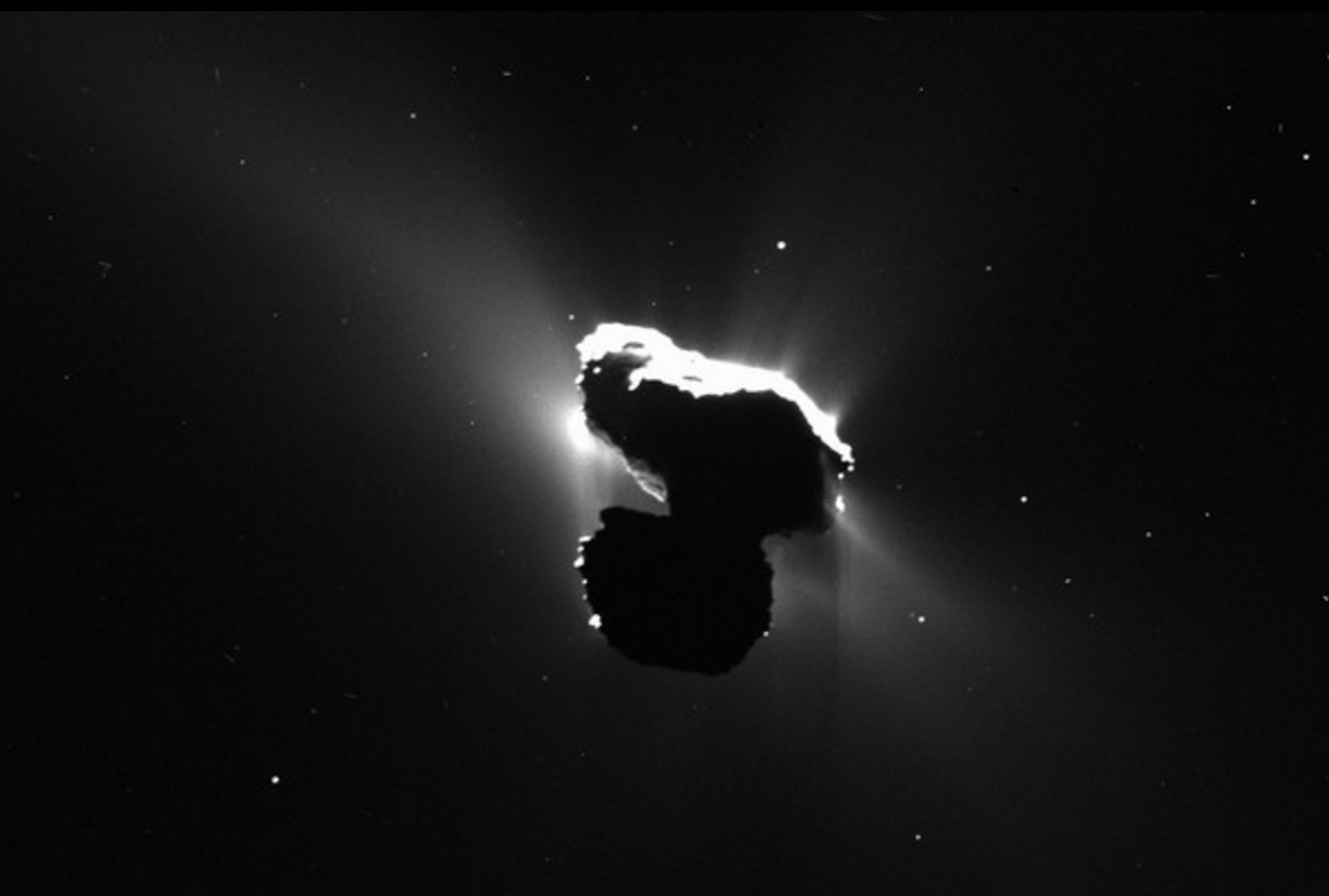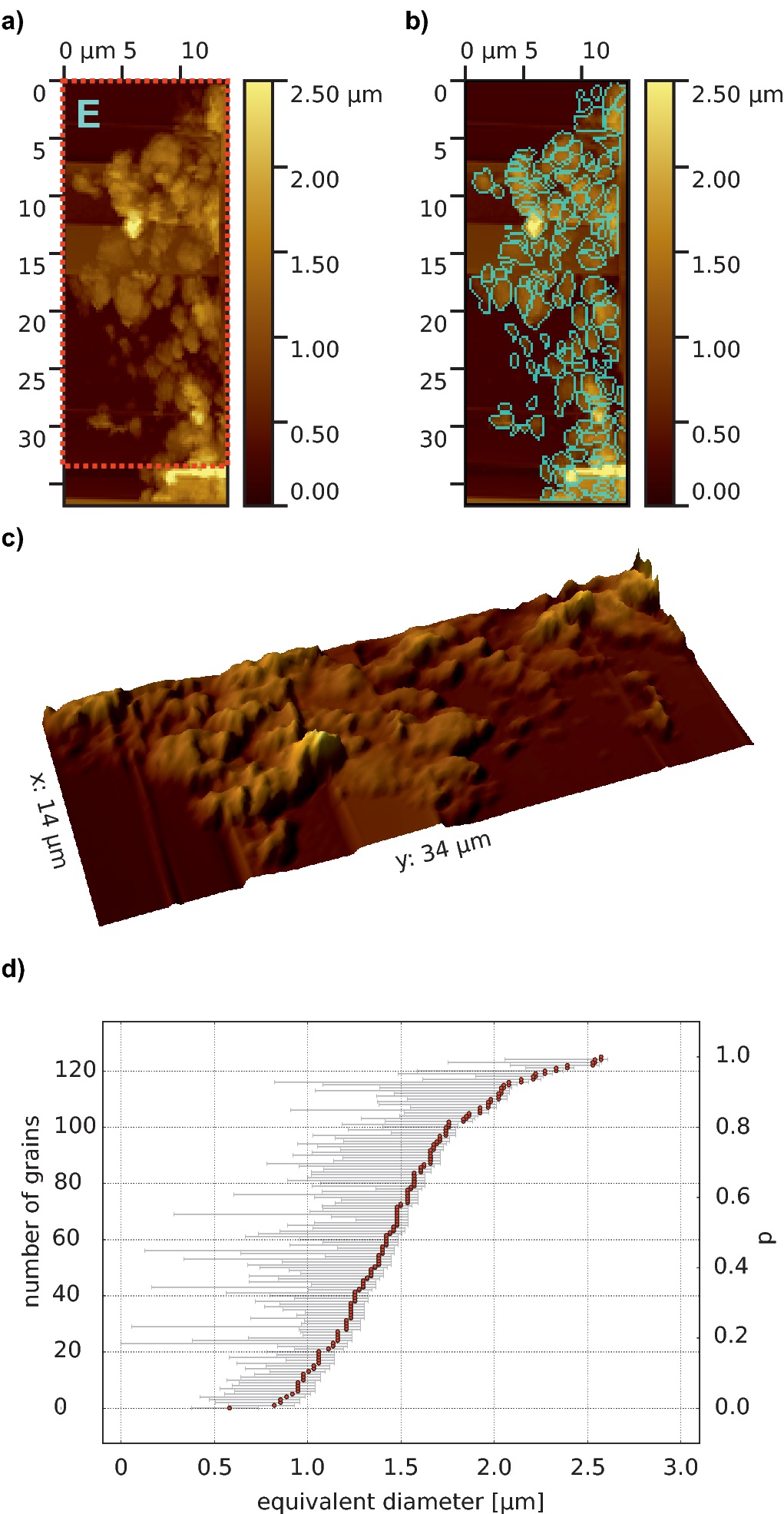Rosetta Spacecraft Scoops Up Surprise Speck of Fluffy Comet Dust

Europe's Rosetta spacecraft has analyzed pristine samples of dust from the comet it orbits, characterizing five tantalizing dust grains whose structure offers surprising insight into the formation of comets and objects in the early solar system.
The new work reports the eagerly-awaited first results from MIDAS (Micro-Imaging Dust Analysis System), Rosetta's atomic force microscope. The instrument analyzed dust around Comet 67P/Churyumov–Gerasimenko that was collected from November 2014 to February 2015, when Rosetta had to move farther from the comet after a close approach led to navigation issues.
"Other instruments could do science during the cruise, during the asteroid flybys and so on, but for us we really needed to get to the comet, and we are designed to look for the really smallest grains," said Mark Bentley, MIDAS principal investigator at the Space Research Institute in Austria. "The dust grains that are smaller than a human hair, smaller than a red blood cell," he told Space.com. [Rosetta Makes Closest Flyby of Comet, Just Four Miles Above (Video)]
MIDAS builds up 3D pictures of dust grains by tapping lightly on them with a series of minscule sharp tips. The most interesting grain found in this first batch of results, called Particle E, was a comparative giant (though still smaller than the diameter of a typical human hair). The dust grain is fluffy and porous — the instrument could 'see' right through it at points — and is basically a pile of smaller grains loosely aggregated together. Such a grain could have been squashed flat with any of the previous dust-bagging missions, which were all swift flybys or grabbed dust that had already traveled far from its source, researchers said.
In fact, all five of the grains Bentley's group analyzed were aggregates of smaller grains.
"How small that goes is still an open question," he said. "We didn't see any single crystals or any particles that we thought, at the resolution we're looking at, 'This appears to be a solid, monolithic chunk.'" (The group thinks one of the grains broke off from another, meaning they likely have analyzed just four.)
The particles' structures suggest that they're all built up of incredibly tiny grains, which form in a hierarchical way — a bunch of extremely tiny particles join together into a bigger particle as they tumble through space, which joins with a bunch of similar-size particles into an even bigger one, and so on.
Breaking space news, the latest updates on rocket launches, skywatching events and more!
The particles, especially E, are similar to a type of large, fluffy dust particle found in Earth's upper atmosphere, which researchers have theorized originate from comets passing near Earth. But those particles' structure could have been distorted by their long journey into the atmosphere, and thus don't paint as clear a picture as something snagged right from a comet itself.
Comets — and therefore comet dust — offer insight into early solar system conditions, when dust around the sun first began to come together into what would eventually form the planets.
"We always talk about comets as being this treasure chest of goodies from the early solar system, where hopefully things have been kept, if not unchanged, then at least as unchanged as you might hope for over several billion years," Bentley said. "And so by seeing these particles, one of the things we're trying to look at is, can we say anything about conditions before the particle was built into this comet?"
It's not yet known how large those aggregates can grow, but Bentley said that some models allow for fluff balls that can grow to be a meter (3.3 feet) or so wide (beyond that size, they probably break apart when they collide). Such objects could have been the seeds of early planetesmials that went on to eventually form the solar system's planets (and comets), Bentley said.
The new work was detailed today (Aug. 31) in the journal Nature.
"By studying comets, we can learn about the processes that gave rise to the solar system, even though those processes happened almost five billion years ago," Ludmilla Kolokolova, a cosmic dust researcher at University of Maryland, wrote in an accompanying "News & Views" article in the same issue of Nature. "The authors' discovery not only proves that the basic building blocks of cometary dust particles are sub-micrometer grains, but also reveals the hierarchical nature of dust particles" — a configuration that has been hypothesized for some comet models, she added. Clarifying those models will let researchers simulate how comets behave more accurately, and better understand the behavior of dust in the early solar system.
More results are due from MIDAS, Bentley said, and the latest analysis is a race against time to analyze the dust that blasted Rosetta during a cometary outburst in February. (The Rosetta mission will end with a dramatic plunge into the comet on Sept. 30).
"We collected this dust, and rather than the problem we had at the beginning of the mission, when we were hunting around the target trying to find any little speck of dust, now we have a target that's covered with dust but we only have 30 days left to scan as much of it as we can," Bentley said. "We're really running up against the clock to get all the data we can before the end of the mission."
Rosetta launched in March 2004 and arrived at Comet 67P in August 2014. In November of that year, the spacecraft dropped a lander called Philae on the surface of the comet. No other mission had ever successfully orbited a comet, or landed softly on one of these icy bodies.
Email Sarah Lewin at slewin@space.com or follow her @SarahExplains. Follow us @Spacedotcom, Facebook and Google+. Original article on Space.com.

Sarah Lewin started writing for Space.com in June of 2015 as a Staff Writer and became Associate Editor in 2019 . Her work has been featured by Scientific American, IEEE Spectrum, Quanta Magazine, Wired, The Scientist, Science Friday and WGBH's Inside NOVA. Sarah has an MA from NYU's Science, Health and Environmental Reporting Program and an AB in mathematics from Brown University. When not writing, reading or thinking about space, Sarah enjoys musical theatre and mathematical papercraft. She is currently Assistant News Editor at Scientific American. You can follow her on Twitter @SarahExplains.

